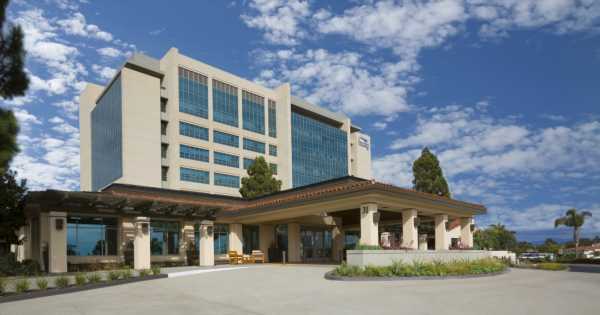Photo: Hoag
Hoag is a nonprofit, regional health system based in Orange County, California, that treats more than 30,000 inpatients and 460,000 outpatients annually. Hoag consists of two acute care hospitals – Hoag Hospital Newport Beach and Hoag Hospital Irvine – in addition to 10 health centers and 14 urgent care centers.
THE PROBLEM
Colorectal cancer represents the third most common cancer in the United States. It also is the third most common cause of cancer-related deaths in the United States.
There are many factors involved in trying to address the issue of reducing the incidence and complications with colorectal cancer. These factors can be broadly categorized into community or population health and health systems. The latter can be further subcategorized within which there is always the issue of quality. And the quality of healthcare continues to evolve.
“One of the tools to improve healthcare overall is technology,” said Dr. Paul Lee, chief of service for the GI lab at Hoag. “We know that a colonoscopy is an essential procedure to help prevent colorectal cancer. Colonoscopies help to prevent colon cancer by identifying precancerous polyps and removing them during the procedure.
“It has been reported that these precancerous polyps are sometimes missed by the doctor,” he continued. “We call this the miss rate. There are many factors involved in why these polyps are missed – some are patient-centered, doctor-centered and technology-centered.”
PROPOSAL
Health technology vendor GI Genius proposed to Hoag to improve upon the latter.
“From a different perspective, a surrogate marker for the quality of the physician performing the colonoscopy is the adenoma detection rate (ADR),” Lee explained. “One of the performance targets set for screening colonoscopies, that is, colonoscopies in otherwise asymptomatic patients, is a 25% ADR in a mixed gender population or 20% ADR for women or 30% for men.
“The role of computer-assisted diagnosis is an up-and-coming technology that will only get better.”
Dr. Paul Lee, Hoag
“The technology aspect of the colonoscopy has gone through multiple improvements,” he added. “These improvements have focused on the instrument itself. It has gone from a rigid scope, to utilizing fiber optics, to high-definition resolution, to narrow-band imaging, etc.”
GI Genius incorporates artificial intelligence to help the physician identify lesions using millions of different pre-programed algorithms. Further, it uses pattern recognition to bring out lesions the computer deems suspicious.
It still is up to the physician to determine whether what is identified is actually something of concern.
“By using this technology, it was supposed to decrease the miss rate or increase the ADR,” Lee noted. “In some reports, the ADR increased by 14%. By increasing the ADR 1%, it has been estimated that this translates to a decrease in colorectal cancer by 3%.”
MEETING THE CHALLENGE
Hoag brought the technology into the GI lab. It is available for any gastroenterologist to use with their colonoscopies, regardless of the indication.
Outpatient colonoscopies in the hospital are usually reserved for patients who have a higher periprocedural risk or have more comorbidities that would be allowable in an outpatient surgery center. In the context of the hospital, staff care for both the inpatient and outpatient.
“Obviously, patients are admitted for specific reasons and colonoscopies for these instances are not the screening procedures for which the technology was originally intended,” Lee explained. “However, I have found in these instances, GI Genius has been useful to identify pre-cancerous polyps and aid the physician to accomplish goals outside of the screening colonoscopy indication.”
RESULTS
Hoag only recently has implemented the AI technology and does not yet have data to report. However, anecdotally, Lee said the technology has been well received and used by many of the physicians who come to the hospital GI lab.
ADVICE FOR OTHERS
“The role of computer-assisted diagnosis is an up-and-coming technology that will only get better,” Lee stated. “The question is not if this will be helpful, but how and when it will be applied. One of the major hurdles is how to value the available technology and how that translates to quality and cost.
“As far as I know, the reimbursement for increasing the quality of a colonoscopy does not increase the reimbursement for such a procedure,” he concluded. “This disproportionate outcome cannot be sustained and needs to be addressed by all parties involved.”
Twitter: @SiwickiHealthIT
Email the writer: [email protected]
Healthcare IT News is a HIMSS Media publication.
Source: Read Full Article

